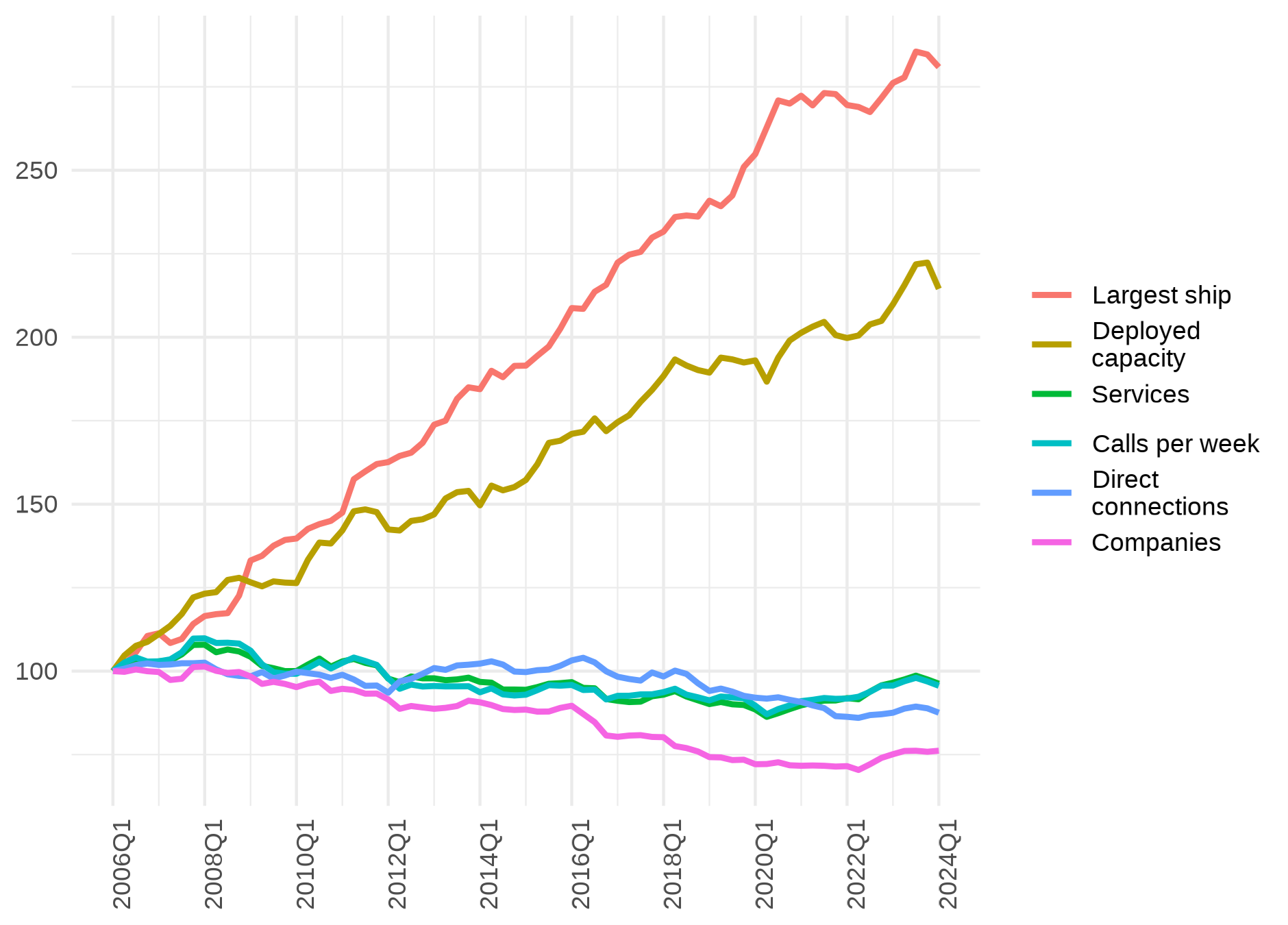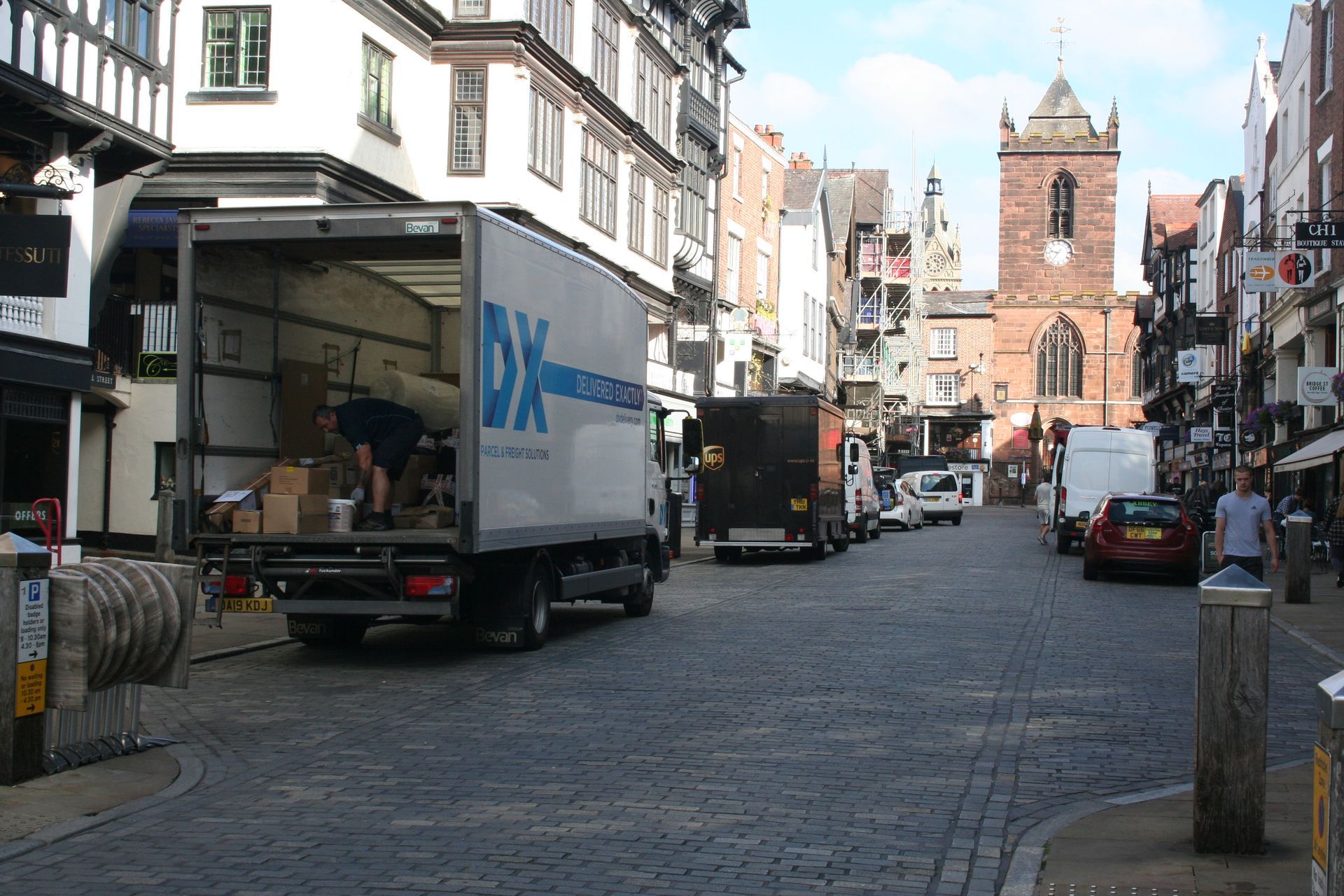VIEWPOINT



SERVICES
Road
Freight demand modelling for highways schemes
As specialists in forecasting demand for freight, we can help you to forecast freight flows for future years for specific highways schemes, taking into account the relevant origins and destinations of traffic, competition between modes of transport and the impact of enhancements to the highways network.
The same modelling approach can be taken for any highway project around the world, but in the UK MDS Transmodal owns and operates the Great Britain Freight Model (GBFM), which allows it to model freight demand using the model which forms the freight component of the UK Department for Transport’s National Transport Model.
Approach
- Establish baseline origin-destination matrix of road freight demand and network flows, including commodities transported and type of HGV, with a split between domestic and international traffic.
- Develop cost models that ‘explain’ freight movement by mode and route.
- Produce forecasts to a future year.
- Develop scenarios to quantify the impact of future changes in the market or policy environment.
- Produce outputs in terms of volume of road freight moved, while allowing for modal shift; industry (user) costs; environmental and congestion (non-user) costs.
Outcome
Quantified demand forecasts for freight by network link, taking into account the potential for modal shift. These can be incorporated with passenger forecasts into an overall assessment of the costs and benefits of a proposed highways scheme.
Freight Strategies
We demonstrate how you can work with the freight and logistics sector to reduce industry costs, create wealth and employment and increase sustainability.
Approach
- Building on a robust evidence base: focus on road freight movements and related origins and destinations based on outputs from the GB Freight Model.
- Taking account of stakeholders concerns: consultation with key users and providers of road freight transport, local communities and public bodies.
- Assessing interventions using consistent criteria: develop and appraise options for infrastructure schemes and policy measures using objective criteria.
- Quantifying economic benefits: model benefits for business and society using the GB Freight Model.
Outcome
An action plan supported by quantified economic benefits, with specified schemes and policy measures to be taken forward by the public sector in partnership with industry.
Urban freight policy development
We quantify and compare the impact of different policy options based on an in-depth understanding of the freight and logistics markets in an urban context.
Approach
- Provide analysis of the relevant freight markets in the urban area.
- Review existing policy measures that regulate urban freight activity.
- Advise on future policy options.
- Carry out stakeholder consultation or freight industry behavioural research.
- Develop ‘Do Nothing’ or ‘Do Minimum’ scenarios to test against future policy options.
- Complete modelling of impacts of policy options in terms of industry and societal costs.
- Carry out cost-benefit analysis.
- Recommend a preferred option.
Outcome
Quantified analysis of policy options, supported by the results of stakeholder consultation and industry research.
Supply & demand for distribution centres
Distribution centres are the hubs of road freight and logistics networks and strategic assessments of the supply and demand of distribution space can assist you in allocating land within local plans. We quantify the balance of demand and supply for any given area, with forecasts for future requirements.
Approach
- Quantify supply based on available data on the location, size and occupier for all distribution centres.
- Estimate baseline demand using available data on the origins and destinations of road freight in the area.
- Forecast demand for distribution centres based on expected changes in overall freight demand and the useful economic life of warehouses.
- Cost modelling of distribution centre competitiveness.
- Consultation with key stakeholders on the forecasts.
Outcome
Quantified analysis of supply and demand for distribution centres, taking into account stakeholder views and an assessment of the relative competitiveness of the area.
National road freight demand forecasting
We help you to understand the impact on the freight and logistics industry of changes in policy and in market conditions that affect the demand for road freight services by using established modelling and forecasting techniques based on sound data and an understanding of industry costs and trends. In the UK this has involved developing road and rail freight forecasts for Government using the Great Britain Freight Model (GBFM), although the modelling techniques have also been applied in the Middle East, Africa and for a pan-European transport model.
Approach
- Building on a robust evidence base: the baseline model is calibrated to official data sources for each cargo type to ‘explain’ the existing position in terms of freight operating costs and revenues.
- Understanding the impact of change: develop future scenarios by translating policy and market change into costs and revenues for the freight and logistics industry.
- Interpreting the results: analysing the results to highlight the meaning of the model outputs.
- Quantifying economic costs and benefits: providing the costs and benefits for business and society.
Outcome
A quantified view of the future is then possible, with a breakdown by cargo type and the modal share for road and rail. This is supported by an interpretation of its meaning for both policy-makers and businesses providing an essential tool for strategic planning.
Economic impact
We quantify the benefits and costs to both business and society of your policy towards, or investment in, the road freight and logistics sector.
Approach
- Developing the ‘long list’: produce a list of freight policies and investments that address the relevant policy objectives.
- Developing the framework: produce an appraisal framework for freight policies and investments taking into account the relevant policy objectives and priorities.
- Sifting the ‘long list’: use the appraisal framework to evaluate the freight policies and investments based on consistent and objective criteria.
- Modelling the impacts: quantify impacts in terms of industry and societal costs and benefits, taking into account any potential shift to rail, shipping or inland waterway transport.
- Recommending priorities: use the evidence to come to robust and independent conclusions on priorities or preferred options.
Outcome
Quantified appraisal of public policy and investments with robust evidence to support conclusions and recommendations for priorities or preferred options.
Funding for modal shift schemes
We develop compelling business cases and applications for public sector funding for rail, shipping and inland waterway projects that secure modal shift.
Approach
- Check the project’s eligibility for funding against funding scheme criteria.
- Develop a plan to gather all the information required.
- Coordinate contributions and letters of support from project partners.
- Liaise with the funding body to maximise the chances of success.
- Complete market and feasibility studies to support the case for funding.
- Complete calculations of financial need and environmental benefits.
- Draft and submit the business case or application to the funding body.
- Provide advice during the grant negotiation process.
Outcome
Funding for the project in the form of a grant to develop new rail, shipping or inland waterway infrastructure or launch a new service.
